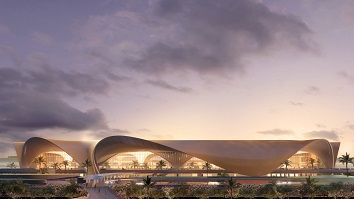The new proposed Navi Mumbai international airport is eagerly expected to be a landmark achievement in India’s aviation industry. This prospective project lies within the Panvel area of Navi Mumbai; designed to alleviate the congestion levels of the current Chhatrapati Shivaji Maharaj International Airport Mumbai(CSMIA) in Mumbai, it also has the potential to bring about the enhanced economic development of the region.
Project Overview
The NMIA is under construction with the assistance of the CIDCO and the partnering Adani Airports. Construction began in August of 2021, and the first phase of the facility is projected to be up and running by December 2024. This phase will initially entail handling of 10 million passengers annually, though the airport’s plan is to increase this capacity to 90 million passengers by the year 2032.
It constitutes of several components of pre-development interviewing including shifting of the Ulwe River, control of high voltage transmission lines, and the Ulwe Hill cutting. With an overall project cost of around 16,700 crore INR (USD 2.

Zaha Hadid Architects designed NMIA with considerable focus on sophistication and functionality in terms of structure. The airport will have a terminal building with efficient daylight access with the provision of ample open area. Technological innovations shall be incorporated in to enhance passengers’ through put mechanisms such as Automatic Check-in, Biometric security measures and efficient and proper baggage handling systems.
The airport is also under an option of greenfield development hence it gives priority to the aspect of sustainability. It aspires to has high energy performance indicators and low environmental footprint in terms of utilization of renewable energy in buildings and environmental friendly construction.
Economic and Social Impact
A key potential impact of the development of NMIA is believed to arise in the form of bolstering economic growth in the region. It is foreseen that it will generate thousands of employment opportunities in both conducting phase and functioning phase, consequently would increase the employment rate in Navi Mumbai and nearby regions and would help in the progress of the economy. This is because increased connectivity has the potential to drive private investment, prop up tourism, and catalyse property development.
In addition, NMIA will increase Mumbai’s perceived connectivity to other international destinations creating a better passenger throughput and making Mumbai a more appealing proposition for global aviation connectivity. This Airport will be linked with CSMIA through an express metro line and will provide connectivity for the Mumbai-Hyderabad HSR corridor starting point, to further amalgamate regional transportation systems.
Challenges and Future Prospects
However, the NMIA project is not without some challenges such as acquisition of land for the construction, environmental sensitivity, and a great deal of capitalization. But authorities have dismissed such concerns stating that everything is well on course and that this airport will hopefully be complete by December 2024. Coming soon after, the necessary testing and trials will be conducted in order to have a glitch-free opening to the public.

Thus the Navi Mumbai International Airport is one of those major infrastructural projects that can bring the transformation in India. It is an image of the country’s desire for growth, unity, and progress and, in words it offers to raise the level of airports’ service in the country and facilitate the development of economy in the given region.
Read also Navi Mumbai International Airport in India
Read also Mumbai Trans Harbour Link, the longest sea bridge in India, inaugurated

